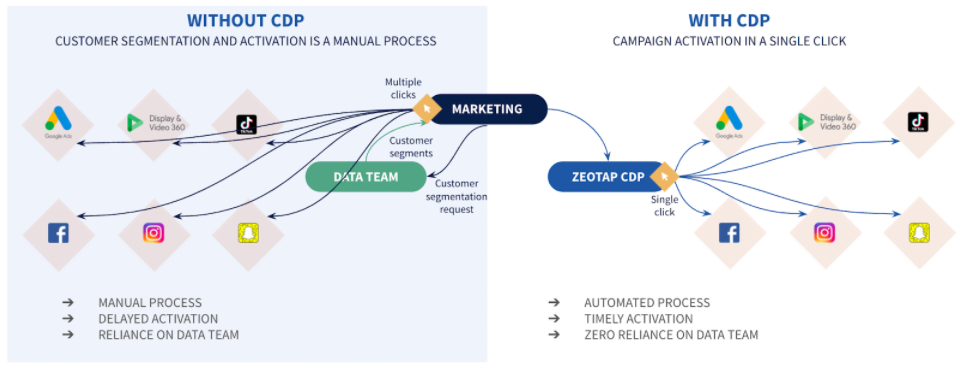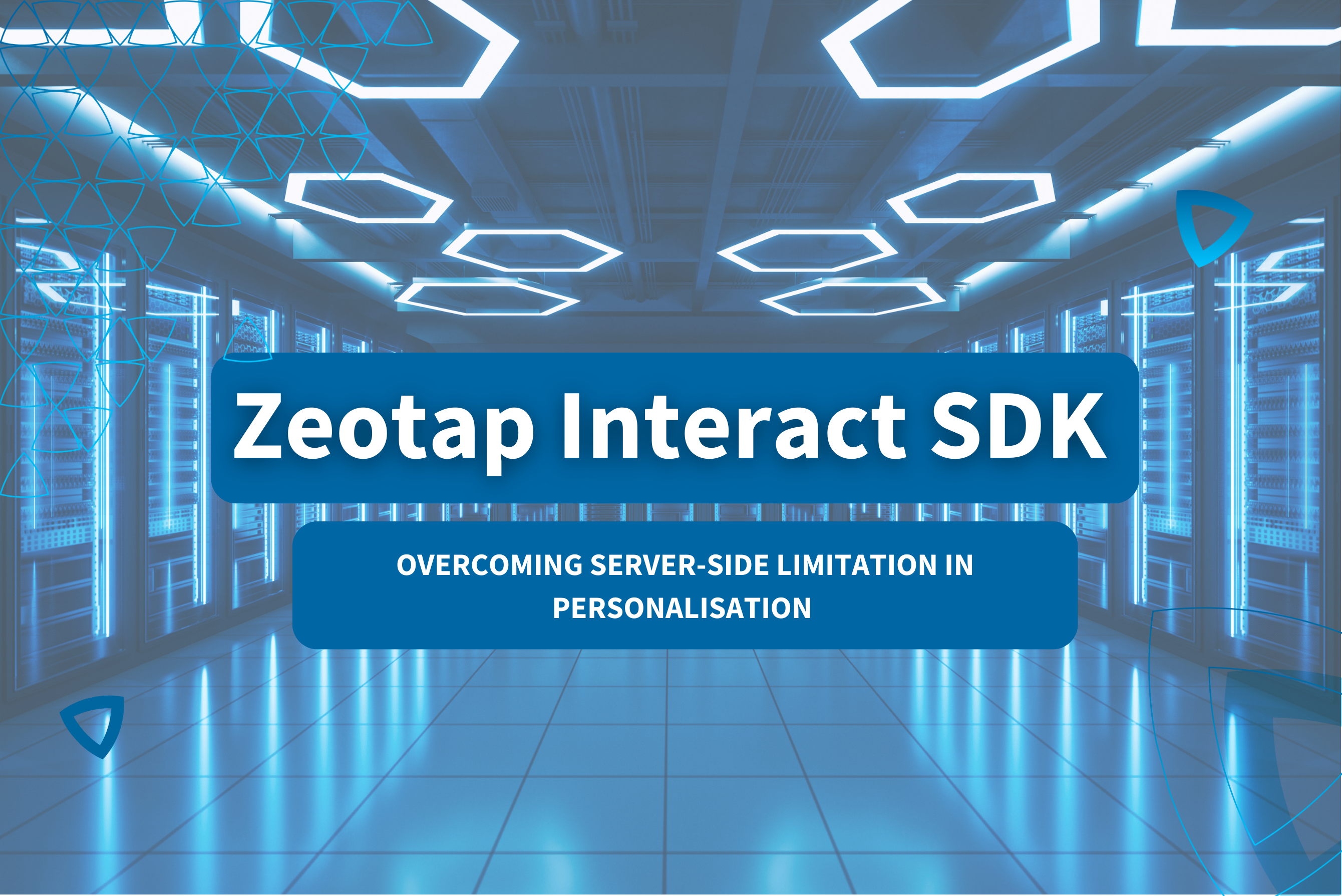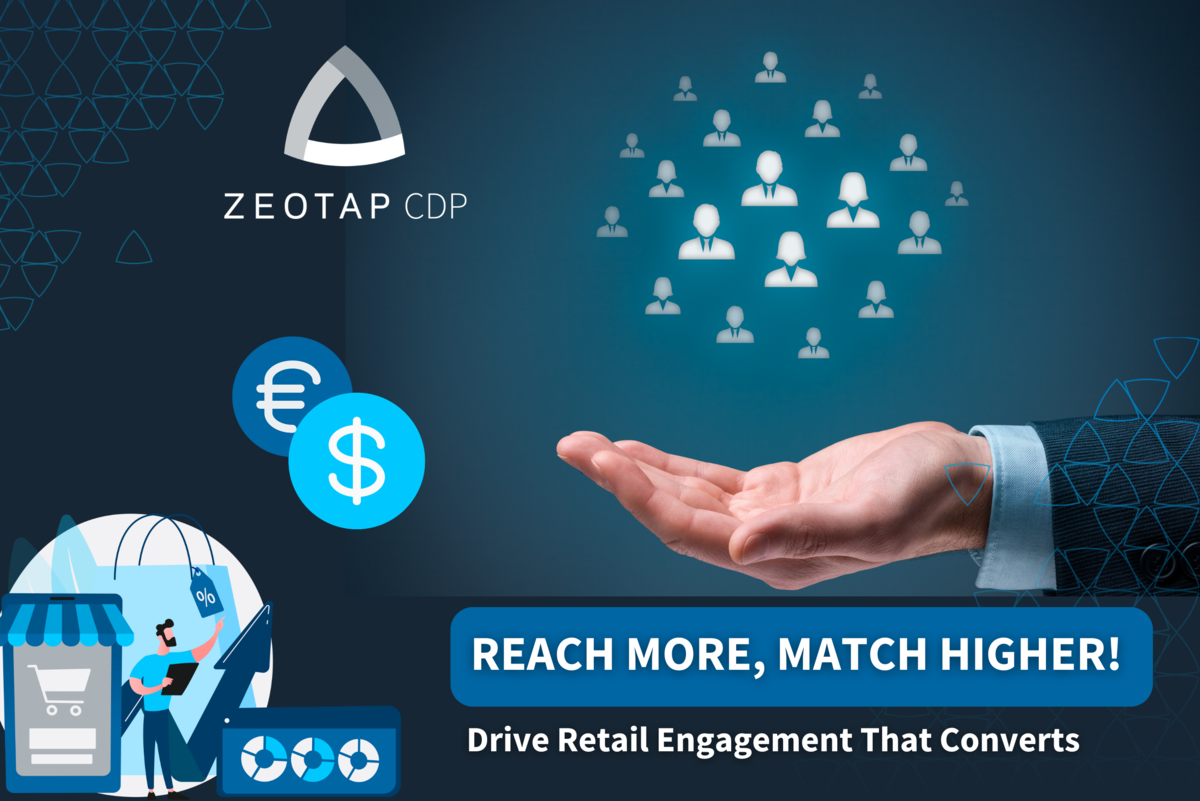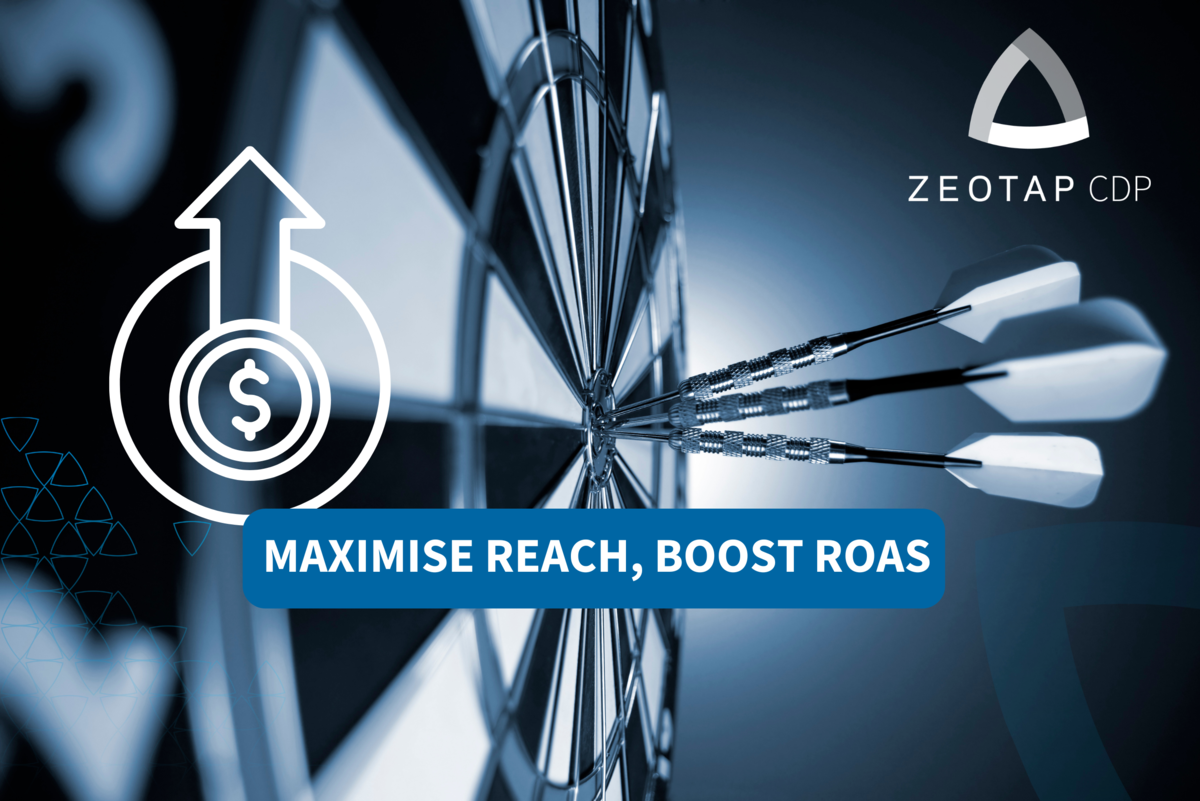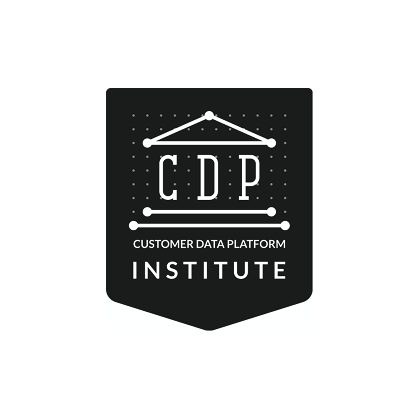What’s happening to cookies?
Over the last decade, third-party cookies have played a crucial role in online marketing, but all this is set to change.
By the end of 2023, Google plans to phase out third-party cookies from Chrome, following other browsers such as Safari and Firefox who have already done so. This marks the beginning of the ‘cookieless future’, and advertisers and publishers alike have long been dreading it.
Some of these fears are justified – even Google itself is unclear as to exactly what its next move will be. However, there are a number of different solutions for cookieless tracking (and the kind of marketing activities it supports) that can be explored long before the ‘cookiepocalypse’ deadline sets in.
In this quick guide, we’ll recap on what exactly the cookieless future means for marketing and advertising, and offer our top recommendations for what to do next..
Quick Recap: What Is Cookie Based Tracking?
Cookie-based tracking is when a user’s web browser stores a cookie, which is a tiny text file, on their computer. It then uses those cookies to keep track of a user’s browsing habits and gathers data specific to them, such as preferences or interests.
This gathered information is then used as the basis for activities such as analytics and personalisation, as well as targeting marketing and advertising.
Are all cookies bad? Explaining first party vs third party cookies
Due to increasing user concerns over the storage of their sensitive information, cookies have begun to be seen in a negative light. But are cookies really as bad as they might seem?
The short answer is no – and the explanation lies in the important difference between first-party cookies (the largely innocent bystander in the cookie debate) and third-party cookies (by all accounts, the culprit). Let’s break this down.
First Party cookies
Cookies generated by the website the user is on are known as first-party cookies.
These are held on the website (or domain) you visit and allow website owners to collect analytics data, maintain preferred language settings, and perform other beneficial functions that provide a positive user experience.
Because they’re created and stored by the host domain, first-party cookies are generally deemed as safe so long as you’re visiting reputable and secure sites.
Third Party cookies
Third-party cookies come from providers that are separate from the site being visited.
These are frequently generated by ad providers. For example, if a user visits a site about shoes, third-party cookies may be generated that store that user’s interest in shoes. When they go on to visit other websites, they may be targeted with ads for shoes.
It’s this cross-domain tracking of user activity that has generated wariness and concern among consumers, and it’s part of the wider debate around data privacy online. With third-party cookies, users are far less clear on how their browsing data is being used and by whom, making the idea of consent to its usage complicated and murky.
All this is what has led all major browsers on a path to eradicating third-party cookies – but they, along with advertisers and publishers, now need to find new ways of being able to accurately deliver digital advertising without them – and that’s what we’ll explore next.
How Will Cookieless Tracking Affect Advertisers?
Advertisers and marketers currently rely on third-party cookies to identify and target consumers – both unknown and known – as they surf around the web.
For example, an eCommerce brand or multi-vendor marketplace selling sports equipment may be looking to acquire new customers. In order to do so, they might engage a DSP (Demand-Side Platform) in order to run ads across a network of third-party websites and platforms, but they wish to target specific audiences in doing so, including:
- Previous visitors to their site (ad retargeting)
- Consumers who have shown interest in their competitors (behavioural targeting)
- Consumers who have gym memberships (audience targeting)
Identifying these audiences is where third-party cookies come in to do the work, aggregating data on individuals as they engage on different websites and platforms to build audiences that our eCommerce company can then target.
When third-party cookies go away, this ability to effectively target and re-target through programmatic advertising is set to change. So with this in mind, what should advertisers be doing?
Top Tips To Prepare For A Cookieless Future
Preparing for a future without cookies is all about balancing the ideas of scale (how effectively you can reach a wide audience) with accuracy (how high quality that audience is). While these aren’t mutually exclusive ideas, they’re often inversely proportional – this means that there’s no one ‘silver bullet’ solution to cookieless tracking, and that a range of solutions will be necessary.
Here are some of the top solutions to consider combining – and their relative strengths and weaknesses.
1. Focus on 1st Party Data with a Customer Data Platform
The most stable, accurate and reliable solution to cookieless tracking lies in first-party data. In other words, the customer data that you’ve collected yourself.
This first-party data can have multiple sources – from Point-of-Sale systems to email service providers to (yes), cookies themselves (the first-party kind). These build up a picture of a consumer’s preferences, location, demographic data, and behavioral data to create a comprehensive customer profile.
However, this is easier said than done. While many companies are ‘drowning’ in customer data, being able to actually use it is a more complex task that involves breaking data out of the silos it’s held in, rationalising identities and then creating seamless connections to the ecosystem it needs to be used in.
This requires a specific piece of technology: a Customer Data Platform (CDP). Customer data platforms (CDP) are designed specifically for first-party data, and collect, consolidate, and integrate first-party consumer information from numerous sources and silos to create a single, complete profile.
But there’s yet another reason that the use of a CDP is critical: they connect that first-party data with the programmatic ecosystem in order to activate it as ads. Without a CDP, being able to activate your data will be a complex and time-consuming web of integrations – and less effective in the process:
The additional need for a CDP is also to ensure that on the journey of collecting, managing and then activating that data, you’re keeping a clear record of consent. After all, the whole reason for the cookieless future was motivated by a need for better data privacy – it would be a shame to mess up now. Not all CDPs are good at this, but Zeotap CDP is made in Germany (one of the strictest compliance environments in the world) so comes with privacy controls baked-in.
2. Explore Universal IDs
Universal IDs are seen as a saviour of digital marketing in the post-cookie world because they allow individual identification across the advertising supply chain without needing to sync cookies.
That’s because Universal IDs are singular identifiers that recognise users throughout a digital marketing ecosystem and allow information associated with the user to be passed on to approved partners within the ecosystem.
And with Zeotap’s own Universal ID, ID+, privacy and compliance come built in. Every ID+ record is pre-integrated with explicit user consent, with built-in tokenisations that ensure the protection of user data. Plus, ID+ is based on transparent user identification using hashed offline identifiers and does not use cookies or MAIDs.
Find out more about the future of Universal IDs.
3. Use contextual advertising
Contextual advertising is likely to experience something of a renaissance as a result of the removal of third-party cookies. Contextual advertising, also known as contextual targeting, had been neglected in favor of third-party cookies and similar techniques, but is likely to come back into vogue as cookies are eliminated and GDPR grows stricter.
In contextual advertising, cookies aren’t needed because audiences are targeted based on keywords and themes obtained from the content surrounding the ad inventory. For example, users might see ads for gardening utensils or other plant-related advertisements, while looking at different garden design ideas – the ad targets the content, rather than the individual. So while it’s relatively easy to understand, it’s also potentially the most vulnerable to inaccuracy.
4. Consider fingerprint based advertising
Fingerprint-based advertising, like most online marketing, involves gathering metadata from a user’s device in order to generate a profile. So if someone visits your site but isn’t logged in, you can use information such as their browser of choice, download speeds, and so on in order to build a comprehensive user profile. The profile remains pseudonymous, but the combination of multiple signals and constantly evolving algorithms makes very specific, granular targeting accessible.
In most cases, fingerprint-based identification should be granted by the user’s express consent. However, this poses a difficulty: today’s consent frameworks are generally based on identifiers such as cookies or email addresses. Probabilistic targeting, on the other hand, makes use of background signals to fill data gaps and may necessitate additional communication to users in order to remain compliant.
So, while fingerprint-based targeting has its drawbacks, such as the reliance on device information making cross-device tracking difficult, it is still a strategy that many are taking.
5. Explore Walled Gardens (with caution)
In a way, a walled garden could be seen as an enticing solution for the cookieless future that so many in the advertising and marketing world are dreading. Walled gardens collect first-party data by relying on having users who are logged in, which then allows businesses to target those individuals across all of their devices without the need for cookies.
6. Stay close to new developments
Finally, let’s address the elephant in the room: Google. Since it’s the arbiter of the cookieless future, the world is looking to Google so see what solutions it will propose for advertisers when the day comes – and this has been far from straightforward to date.
The original proposal was FLoC (Federated Learning of Cohorts), a cohort-based system that grouped users based on interests. In theory, this meant that user privacy is protected and respected, while still allowing the advertiser to target.
However, this created its own challenge: you need cohorts that are sufficiently large for the purposes of privacy, but still with meaningful enough attributes for accurate personalisation. After running into this challenge and others, FLoC was abandoned by Google in January 2022.
The new proposal from Google is for Topics. This system enables your browser to determine a handful of topics (i.e. ‘womenswear’ or ‘air travel’) that represent your top interests for that week based on your browsing. Topics are kept for only three weeks and then deleted, in theory preserving privacy while allowing for accurate targeting.
However, it’s early days – the lesson here is that in the year or so before the cookiepocalypse lands, many solutions are still only in the testing phases – it will pay dividends to keep track of what’s going on here.
Closing Thoughts
Cookies have become less popular for internet advertising as users start to delete them and large platforms switch to focusing on digital privacy. And in browsers such as Safari and Firefox, third-party cookies have already vanished, which means the cookieless future is already here.
As a marketer, that means there’s no time to lose in getting ready for the new world of digital marketing. The cookieless future doesn’t just include establishing a solid, authorised first-party data asset, it also entails putting together a whole new set of addressability solutions where previously there was only one (third-party cookies).
While this may seem intimidating, it should be viewed as an opportunity – the reason third-party cookies are disappearing is that they broke down trust between consumers and the advertising ecosystem. Given the right solutions, this is the opportunity to rebuild it.
